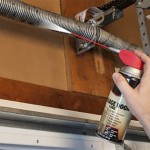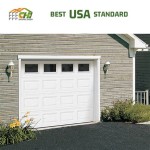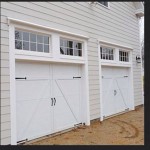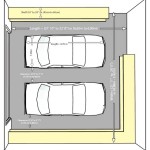Plug-In Electric Heaters for Garages: An Overview
Garages, often detached or semi-detached from the main living space, frequently lack adequate insulation and dedicated heating systems. This makes them uncomfortably cold during the colder months, hindering activities such as vehicle maintenance, woodworking, or even storage. Plug-in electric heaters offer a portable and relatively simple solution for providing supplemental heat in these spaces. These heaters convert electrical energy into heat, providing targeted warmth where and when it's needed. However, selecting the appropriate heater requires careful consideration of factors such as garage size, insulation levels, power availability, and safety features.
The market presents a diverse range of plug-in electric heaters, each with its unique heating mechanism, power output, and design. Understanding the different types and their respective advantages and disadvantages is crucial for making an informed purchase. Furthermore, adherence to safety guidelines is paramount to prevent fire hazards and ensure the well-being of individuals using the heater.
Types of Plug-In Electric Heaters Suitable for Garages
Several types of plug-in electric heaters are commonly used in garages. These include space heaters, infrared heaters, and forced-air heaters. Each type operates on a different principle and offers varying levels of efficiency and performance in different environments.
Space Heaters: These are perhaps the most ubiquitous type, utilizing a heating element, often a coil of resistance wire, to warm the surrounding air. The heated air then rises and circulates through the space, gradually increasing the overall temperature. Space heaters are generally relatively inexpensive and readily available. However, they tend to be less efficient than other types, as they warm the air directly, which can easily escape through poorly insulated areas. Ceramic space heaters are a specific type of space heater that uses ceramic plates to heat up. These are often considered safer and more efficient than traditional coil-based space heaters because the ceramic material cools down faster, reducing the risk of burns or fires.
Infrared Heaters: Infrared heaters, also known as radiant heaters, directly warm objects and people within their line of sight. They emit infrared radiation, which is absorbed by surfaces, causing them to heat up. This direct heating makes them more efficient than space heaters in drafty or uninsulated garages, as they don't rely on heating the air, which can quickly dissipate. Infrared heaters are particularly suitable for providing targeted warmth in specific areas of the garage, such as a workbench or seating area. They are available in various wattages and sizes, and some models can be mounted on walls or ceilings to save floor space. However, infrared heaters provide little to no heat if you are not within direct line of sight of the heater.
Forced-Air Heaters: These heaters utilize a fan to circulate air over a heated element, rapidly distributing warmth throughout the garage. They are effective at quickly raising the temperature of a large space and are particularly well-suited for garages with good insulation. Forced-air heaters can be electric or gas-powered; however, plug-in models are typically electric. Electric forced-air heaters are generally more portable and easier to use than gas-powered models. A potential drawback of forced-air heaters is that they can create drafts and stir up dust and debris in the garage. Additionally, the fan can be noisy, which may be a consideration for some users.
Factors to Consider When Choosing a Plug-In Electric Heater
Selecting the right plug-in electric heater for a garage involves considering several critical factors. These encompass the garage's size and insulation, the available power supply, the intended use of the heater, and safety features. A thorough assessment of these factors will ensure that the chosen heater is both effective and safe.
Garage Size and Insulation: The size of the garage is a primary determinant of the heater's required wattage. A larger garage will necessitate a higher wattage heater to effectively raise the temperature. Similarly, the level of insulation plays a significant role. A well-insulated garage will retain heat more effectively, allowing for a lower wattage heater to be used. Conversely, a poorly insulated garage will require a higher wattage heater to compensate for heat loss. A general rule of thumb is to use approximately 10 watts per square foot of garage space. However, this is just a guideline, and the actual wattage required may vary depending on the insulation level and climate. Online calculators and expert consultations can help determine the precise wattage needed for a specific garage.
Power Supply: It is essential to verify that the garage's electrical system can handle the heater's power consumption. High-wattage heaters can draw a significant amount of electricity, potentially overloading circuits and tripping breakers. The heater's wattage should be compatible with the amperage of the circuit it will be plugged into. Most standard household circuits are rated for 15 or 20 amps. A 1500-watt heater, for example, will draw approximately 12.5 amps, which is within the capacity of a 15-amp circuit. However, it is crucial to avoid plugging other high-power devices into the same circuit to prevent overloading. If the garage's electrical system is inadequate, it may be necessary to upgrade the wiring or install a dedicated circuit for the heater. Consulting a qualified electrician is crucial for ensuring electrical safety.
Intended Use: The intended use of the heater will also influence the optimal choice. If the heater is primarily intended for providing supplemental heat while working in the garage, a portable infrared heater may be the most efficient option, as it can provide targeted warmth directly to the user. If the goal is to raise the overall temperature of the garage for storage or other purposes, a forced-air heater or a space heater may be more appropriate. Consider the duration of use and the desired temperature when making the selection. For intermittent use, a smaller, less powerful heater may suffice, while for continuous use, a more robust and energy-efficient model may be preferred.
Safety Features: Safety should be a paramount concern when selecting a plug-in electric heater. Look for heaters with multiple safety features, such as overheat protection, tip-over protection, and cool-touch housings. Overheat protection will automatically shut off the heater if it reaches an unsafe temperature, preventing fire hazards. Tip-over protection will shut off the heater if it is accidentally knocked over, reducing the risk of burns or fires. Cool-touch housings prevent the exterior of the heater from becoming excessively hot, minimizing the risk of accidental burns. Additionally, ensure that the heater is certified by a reputable safety organization, such as UL or ETL. These certifications indicate that the heater has been tested and meets established safety standards. Always follow the manufacturer's instructions and keep flammable materials away from the heater.
Safety Guidelines for Using Plug-In Electric Heaters in Garages
Safe operation of plug-in electric heaters is essential to prevent fire hazards and ensure the well-being of individuals in the garage. Adherence to these guidelines creates a safer environment.
Proper Placement: The correct placement of the heater is crucial to prevent fire hazards. Never place the heater near flammable materials, such as gasoline, propane, paints, or paper. Maintain a minimum clearance of at least three feet from all flammable materials. Ensure that the heater is placed on a level, stable surface to prevent it from tipping over. Avoid placing the heater in high-traffic areas where it could be easily bumped or knocked over. Consider the placement of power cords to minimize tripping hazards and prevent damage to the cord. Never run the power cord under rugs or carpets, as this can trap heat and create a fire hazard.
Regular Maintenance: Regular maintenance is essential to ensure the safe and efficient operation of the heater. Inspect the heater regularly for any signs of damage, such as frayed cords, cracked housings, or loose connections. If any damage is detected, discontinue use of the heater and have it repaired by a qualified technician. Clean the heater regularly to remove dust and debris, which can accumulate on the heating element and reduce its efficiency. Unplug the heater before cleaning and use a soft, dry cloth to wipe down the exterior. Never immerse the heater in water or use abrasive cleaners, as this can damage the electrical components. Check the air vents regularly to ensure that they are not blocked by dust or debris. Clogged air vents can cause the heater to overheat and potentially create a fire hazard.
Supervision: Never leave a plug-in electric heater unattended, especially when children or pets are present. Children and pets may not understand the dangers associated with the heater and could accidentally touch the hot surfaces or knock it over. If you must leave the garage, turn off the heater and unplug it from the power outlet. Avoid using the heater while sleeping, as this can increase the risk of fire. Install smoke detectors and carbon monoxide detectors in the garage to provide early warning in the event of a fire or carbon monoxide leak. Test the detectors regularly to ensure that they are functioning properly.
Extension Cords: The use of extension cords should be avoided whenever possible. Extension cords can be a fire hazard if they are not properly sized or if they are used incorrectly. If an extension cord is necessary, use a heavy-duty extension cord that is rated for the heater's wattage. Ensure that the extension cord is in good condition and free from damage. Never use multiple extension cords connected together, as this can create a fire hazard. Avoid running the extension cord under rugs or carpets, as this can trap heat and create a fire hazard. Unplug the extension cord when it is not in use.
By carefully considering the type of heater, the garage's specific needs, and adhering to established safety guidelines, individuals can effectively and safely utilize plug-in electric heaters to improve the comfort and usability of their garages during colder months.

Newair 17 060 Btu 5000 Watt 240v Ceiling Mount Hardwired Electric Shop Garage Heater G73 The Home

8500w Electric Garage Heater 240v With Thermostat And Timer Overheat Protection Remote Hardwired No Plug

240v Electric Space Heater With Separate External Thermostat Control
King Electric 1500w Portable Garage Heater W 120v Plug 175 Sq Ft 216 Cfm 12 5 Amp Yellow

Afaif 10000w Electric Garage Heater 240v With Thermostat And Timer Overheat Protection Remote Hardwired No Plug Hddj2225p174290
King Electric 4000w Portable Garage Heater W 240v Plug 500 Sq Ft 300 Cfm 16 Amp 208v Yellow

Electric Garage Forced Air Heater Portable Large Room Fan Shop Mount With Remote Ebay
King Electric Space Heater 8900
.jpg?strip=all)
Infratech C Series 33 Inch 1500w Single Element Electric Infrared Comfort Garage Heater With Plug 120v Black

Tpi Fan Forced Milkhouse Portable Heater








